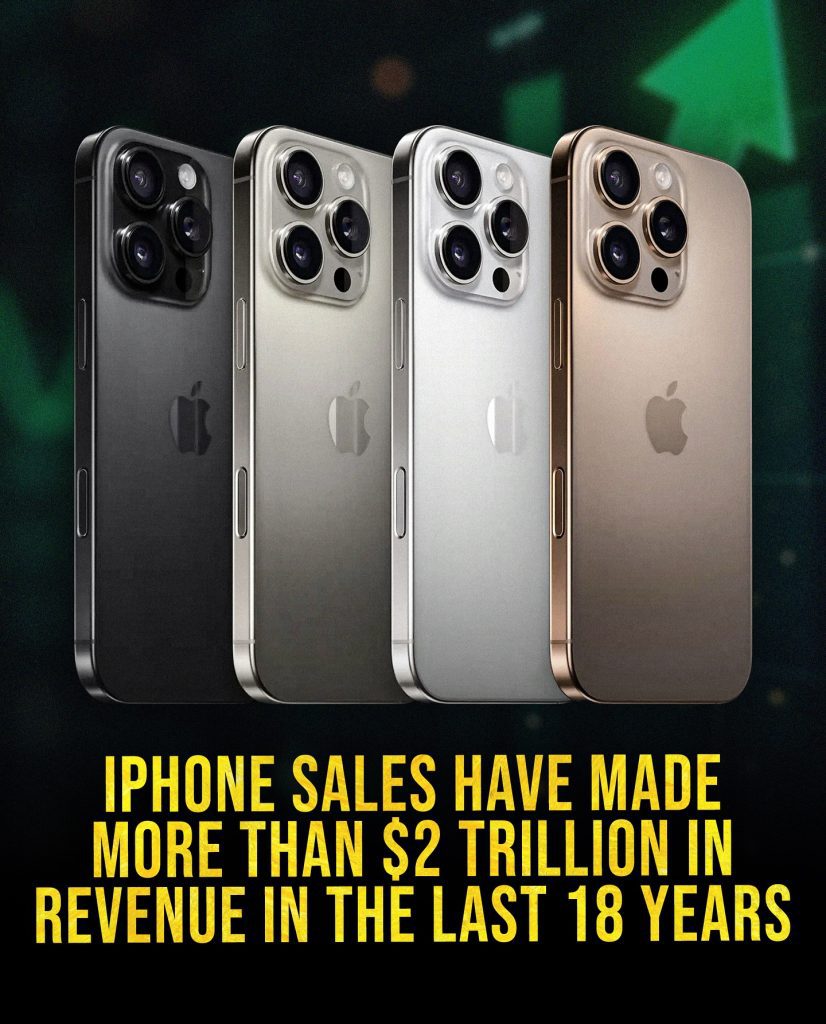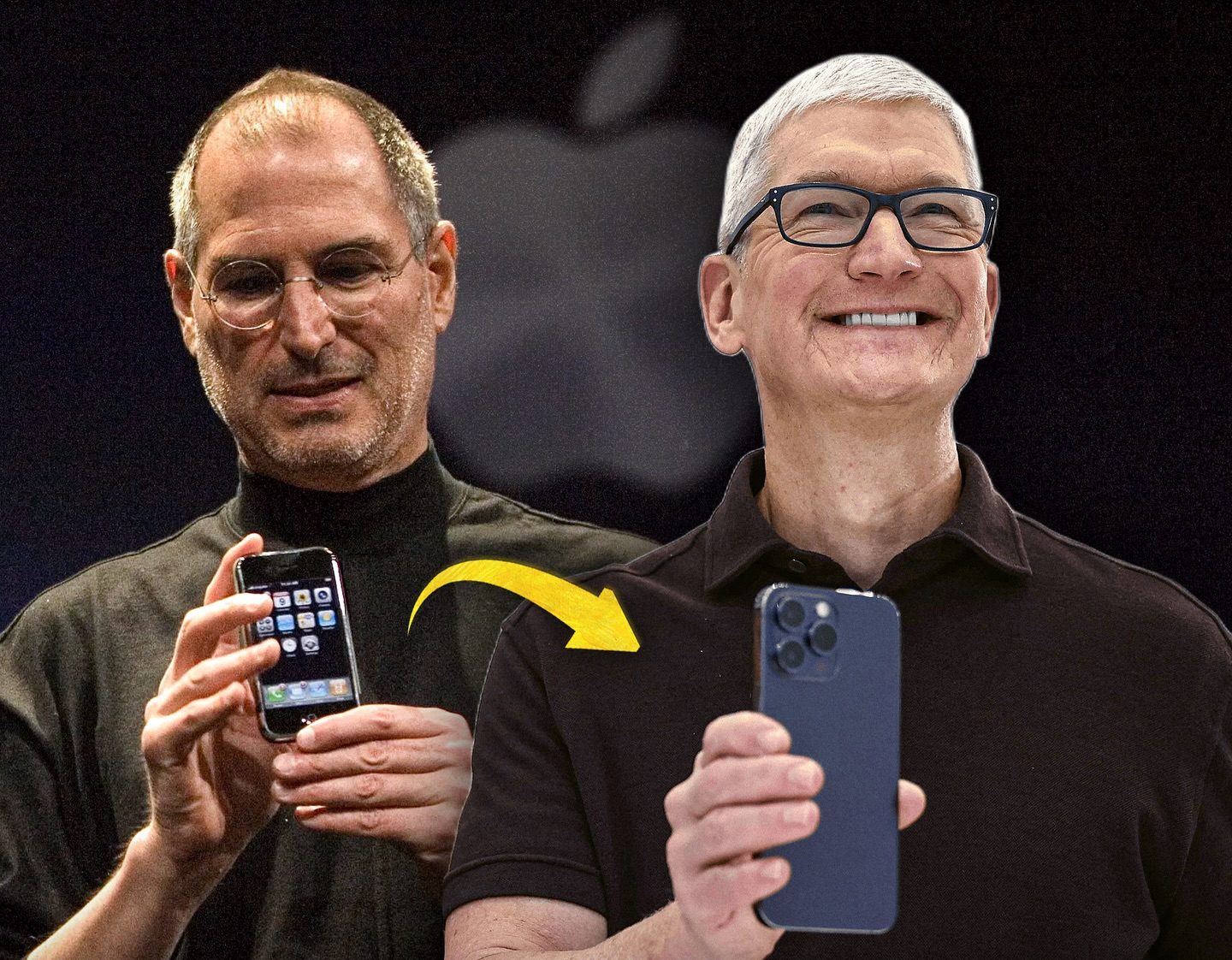From Steve Jobs to Tim Cook: Apple Has Officially Sold Over 3 Billion iPhones and Made $2 Trillion — Here’s How a Simple Device Changed the World
Eighteen years ago, a man in a black turtleneck walked on stage and held up what looked like just another sleek Apple device. But that moment—Steve Jobs introducing the original iPhone in 2007—sparked a revolution that no one, not even the most optimistic fanboys, could’ve fully imagined. Fast-forward to today, and Apple has officially crossed 3 billion iPhones sold. That’s not just a number—it’s a cultural and technological shift that rewired how the world communicates, navigates, works, and lives.
Three. Billion. iPhones.

It’s staggering. Just to put that in perspective: the entire population of the planet is about 8 billion people. That means nearly 40% of Earth’s population has owned or held an iPhone at some point—and in reality, many have had several. We’re not just talking about a successful product; we’re talking about a device that became an extension of the human hand.
But how did we get here?
In 2007, Apple sold its very first iPhone. It had no App Store, no front-facing camera, and just 4 GB of storage. Yet it was mesmerizing. Unlike anything else at the time, the iPhone didn’t have a stylus or physical keyboard—it was just glass, gesture, and magic. It redefined the smartphone, kicked off the modern mobile era, and, in many ways, reshaped the tech industry itself.
It took Apple nine years to reach its first billion iPhones sold in 2016. The second billion came faster—just five years later in 2021. And now, in what feels like a blink, they’ve passed the 3 billion mark in only four more years. It’s exponential growth in real time, and the numbers tell a story of demand that never really slowed down.
The success of the iPhone has always been about more than hardware. Apple’s real magic has been in building an entire ecosystem that wraps itself around your daily life. The iPhone isn’t just a phone—it’s your camera, your wallet, your calendar, your journal, your TV, your radio, your GPS, your health monitor, your access to the entire internet and your entire social circle. And every generation—whether the iPhone 4, the game-changing 6, the superpowered X, or the recent iPhone 15 Pro—built on that foundation with better features, stronger cameras, and slicker designs.
That evolution is why the iPhone has generated over $2 trillion in total revenue. Let that sink in: one product line, $2 trillion. That’s more than the GDP of Brazil, more than Canada, more than the combined economies of several developed nations. It’s mind-bending. And it’s not just sales—it’s recurring services, accessories, app purchases, iCloud storage, AirPods, AppleCare, and more. The iPhone is the gateway drug to Apple’s entire world.
In 2024, the iPhone is still Apple’s heart. It’s what keeps the Apple Watch buzzing, the AirPods humming, and the iCloud flowing. While Macs and iPads matter, and services like Apple Music and TV+ keep growing, the iPhone is still the core engine behind Apple’s nearly $4 trillion market valuation. You don’t get to be the most valuable company on Earth without a product that people can’t stop buying.
Tim Cook, who took the reins after Steve Jobs’ passing in 2011, has been the steady captain of this rocket ship. Under his leadership, Apple didn’t just maintain the iPhone’s momentum—it amplified it. Every keynote since has shown how carefully Apple iterates: not rushing out experimental designs but perfecting features that millions will rely on daily. Dynamic Island, ProMotion, Night Mode, satellite emergency SOS—it’s innovation with intention.
Of course, none of this came without criticism. There were years where fans said the updates were too incremental. There were “battery-gate” and controversies over removing the headphone jack. But Apple always managed to shift the narrative, not through loud marketing alone, but by showing users why the change made sense—eventually.
And then there’s the emotional part. People don’t just use iPhones—they live on them. They Facetime their families across the globe. They capture their baby’s first steps. They take Zoom calls while walking the dog. They track workouts, make playlists, laugh at memes, and text “I love you” late at night. The iPhone is as personal as it gets. That’s why it sticks.
It’s also become a status symbol in many parts of the world. In emerging markets, owning an iPhone isn’t just about features—it’s a signal of aspiration and prestige. In the West, it’s still the dominant choice for teens and professionals alike. Even secondhand iPhones hold value better than most flagship Androids. It’s a brand that transcends categories.
And now, as Apple looks to the future—with whispers of foldable models, AR glasses, and a more deeply AI-powered Siri—the iPhone remains the center of the storm. It’s no longer just a tech device. It’s a mirror of the era. From selfies in protests to payments at grocery stores to editing 4K videos on the go, the iPhone has become a tool for everything, everywhere, all at once.
But this milestone of 3 billion units isn’t just a celebration—it’s a reminder. That something as small as a phone, born in the hands of one visionary, can completely change the world. That with the right mix of innovation, timing, and design, a single product can become a global phenomenon. And that we’ve all been lucky to live through one of the most transformative chapters in consumer tech history.
So what’s next?
Probably the iPhone 16. And then 17. And maybe someday a 30th-anniversary edition. Maybe holographic displays, maybe complete AI integration, maybe no ports at all. Whatever form it takes, one thing is clear: the iPhone isn’t going anywhere.
It’s not just a product. It’s a legacy. And we’re all still part of the story.

